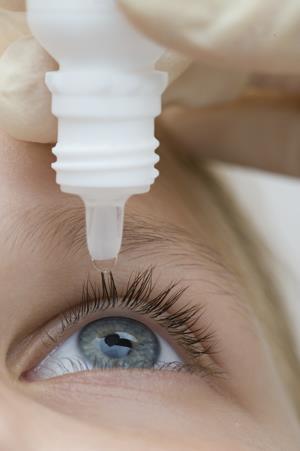Surface scientists question current treatment of common eye condition
Measurements highlighting the different mechanical properties of healthy and diseased tear film1 could provide fresh understanding of the underlying causes of dry eye syndrome, and point to new treatments to ease the discomfort of millions of sufferers.

With risk factors including contact lens wear and extended periods in front of a computer screen, the discomfort and visual disturbance associated with dry eye syndrome (DES) is a growing public health concern.
Essential for healthy eyes is the ability to maintain a stable tear film – a protective covering which spreads over the eye every time we blink. The tear film lipid layer (TFLL) sits at the air–tear interface sits and is mainly composed of meibomian lipids, complex mixtures of wax, sterol esters and polar molecules. It is commonly thought that the role of the TFLL is to suppress evaporation of tear fluid, however recent studies have shown that the layer is surprisingly ineffective at preventing evaporation.2
Now, Georgi Georgiev of Sofia University, Bulgaria, and Norihiko Yokoi of Kyoto Prefectural University of Medicine, Japan, believe that the viscoelastic properties of the TFLL – which dictate how the film stores energy within its structure – may be key to its importance. Their team extracted meibomian lipids from healthy volunteers and sufferers of meibomian gland dysfunction, a condition strongly associated with DES. They spread the lipid films over a replica tear–air interface and measured how the films responded to controlled, blink-like deformations.
Healthy TFLL, they discovered, is elastic: it stores the energy that is transferred upon deformation, and rapidly recovers when the deformation is removed. Diseased TFLL, on the other hand, is predominantly viscous. Less able to recover after stress, it is more susceptible to break up. These mechanical observations are consistent with compositional differences in the lipid layers.
Georgiev questions some of the current treatments for DES, which are aimed at improving the ability of the TFLL to suppress evaporation. ‘We need to completely rethink the role of the TFLL,’ he says, ‘and pay close attention to its viscoelasticity.’ The group now hope to develop new treatments, focused on improving the mechanical properties of the TFLL.
José Toca-Herrera, head of the Biophysics Institute at the University of Natural Resources and Life Sciences in Vienna, Austria, is very interested in the work. Whilst he suggests more experiments to confirm the biological impact of the findings, he says that the research is a good example ‘of how existing knowledge of interfacial science and soft matter physics can be used in biomedicine’.
References
1 G Georgiev et al, Soft Matter, 2014, DOI: 10.1039/c4sm00758a This paper is free to access until 18 July 2014
2 C F Cerretani, N H Ho and C J Radke, Adv. Colloid Interface Sci., 197–198, 2013, 33 (DOI: 10.1016/j.cis.2013.03.007)






No comments yet